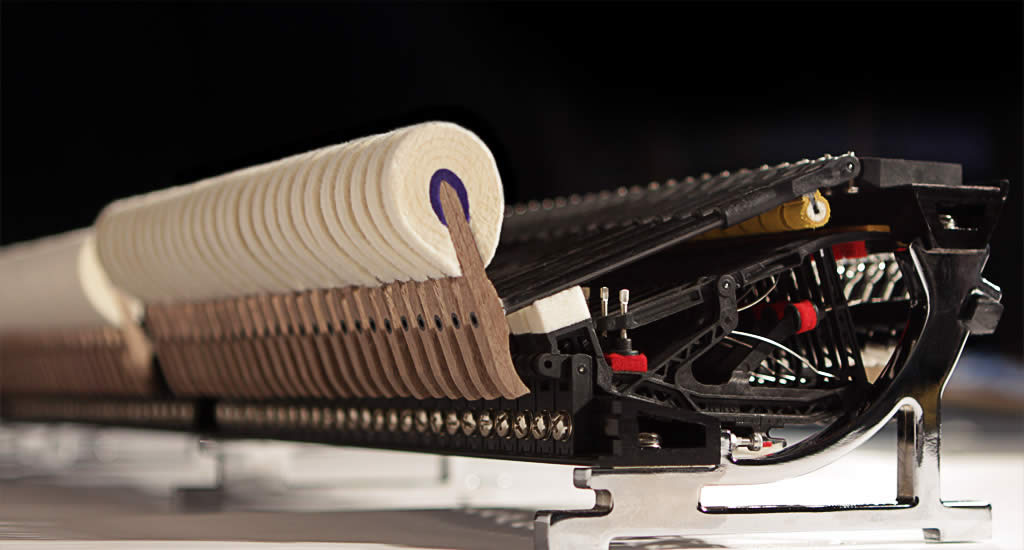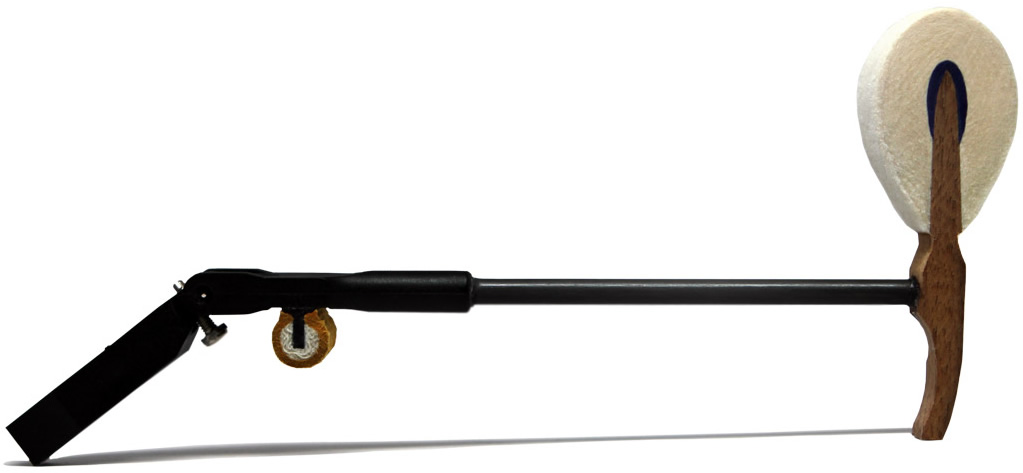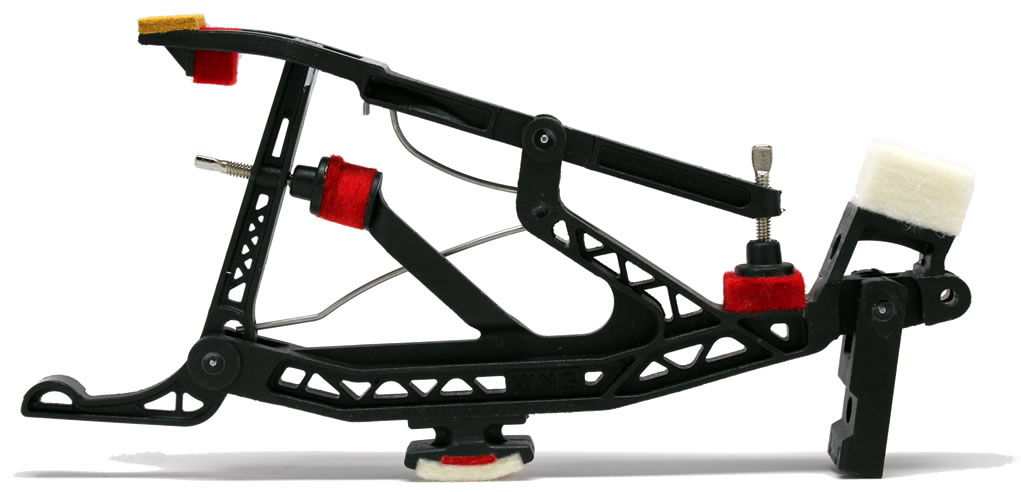
Materials
When Wessell, Nickel & Gross first began designing its new piano actions
it quickly discovered that wood, cloth bushings, and traditional materials were inefficient and would ultimately hold the action back.
Knowing this, WNG decided to throw away conventional piano action materials and use cutting edge ones that are stronger, more reliable, more durable, and require far less maintenance.

Epoxy Carbon Fiber Shanks
Epoxy carbon fiber shanks offer two very distinct advantages: they are incredibly strong, and their strength is incredibly consistent.
When a key is struck, the shank with the hammer attached travels upwards to hit the piano strings. Unfortunately, wooden hammer shanks are not very strong and wobble and bend on its path towards the strings. This bending results in lost energy and power, and some keys playing louder or softer than others.
With epoxy carbon fiber hammer shanks, not only is there no loss of energy due to the shank bending or wobbling, but every shank in a set of 90 is exactly as strong as the one next to it. This consistency in strength frees the pianist from calibrating his touch from key to key and gives him predictable expression and greater control over the instrument.
Advanced Composite

The core and backbone of WNG’s piano actions is its iconic black composite material. Not to be confused with simple plastic, this advanced composite material is much stronger and durable than wood. This strength has allowed WNG to create breakthrough designs that would have been impossible to execute in wood.

Hard Bushings
Because bushings are such an important part of a piano action, WNG developed an innovative very hard, very dense material for its bushings. Not only is this material completely impervious to moisture, but still keeps extremely stable pin torque and uniform touch after being tested at 18 million blows.
Bushings operate in very tight torque tolerances in piano actions—too tight and the pin won’t move; too loose and the pin moves too freely—and any change in torque will directly affect the touch of the piano.
Traditional actions use cloth bushings, which are very susceptible to moisture and expands and contracts with the seasons. Not only does this make touch unreliable and inconsistent, but it also makes regulating a piano a nightmare.
